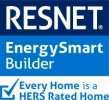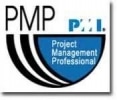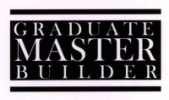The need to increase the energy efficiency of our homes and buildings is imperative. Whether we approach this need from a purely personal economic perspective, or consider the security and resilience of decentralized local renewable energy generation, or desire to protect environmental health: the manifest result is a reduction in energy consumption.
Realizing that a home, once built, will likely undergo major remodelling/ renovations only once every 30 to 50 years – careful thought and planning up front can provide important energy savings for decades.
A spectrum of options is available for energy-efficient design, planning, and construction. And it doesn’t have to be as challenging as a chess match.
Code
‘Building code’ – whether national codes like the International Building/ Residential Code (IBC/ IRC), or the International Energy Conservation Code (IECC), or state codes like the Virginia Uniform Statwide Building Code (USVBC) – represents a basement-floor approach. ‘What’s the least that can be done to build this today’ accurately represents the ‘lowest’ level of energy performance, building ‘to code’. If you build to code, just keep in mind: anything less would be illegal.
Changes in the ‘lowest acceptable’ level performance have been made to national codes, however, improving by each three-year national code cycle. State legislatures modify national code energy requirements, selectively changing, waiving, or diluting statewide scope of national requirements. Even so, progress on energy-efficiency performance is noticeable at the state level. Most in the building industry admit change in energy-efficient requirements is inevitable.
Energy Star for Homes
Promoted by both the US Department of Energy (DOE) and the US Environmental Protection Agency (EPA), Energy Star is not simply a program encouraging use of energy-efficient appliances. Energy Star is applicable to the design and construction of the entire home.
Energy Star requirements have been upgraded through three versions, to maintain the program’s relevance and meaning for energy efficiency compared to improving building codes. Version 3 of Energy Star in 2012 aims for a 30% reduction in home energy consumption compared to a ‘code built’ home.
Challenge Home
Promoted by the US Department of Energy (DOE), the program starts with the Energy-Star level of energy efficient performance, and encourages further, significant reductions. ‘Net Zero’ – a term defined below – is the stated eventual endpoint for energy efficiency under the Builders Challenge program.
Passive House
Conceived as a ‘factor ten’ reduction in energy consumption, Passive House aims for energy consumption savings of up to 90% compared to earlier ‘code built’ buildings. Passive solar design principles are present in Passive House, but the Passive House paradigm is far more comprehensive. The Passive House energy-modelling tool for calculating heat gains, heat losses, and energy consumption, for example, is one of the finest in the world.
A key goal for ‘Passive House’ is tailoring the building enclosure to its environment. Optimizing the thicknesses of insulation, optimizing window and door performance, orienting building features to accept sunlight inside during the heating season and shade from sunlight during the cooling season, Passive House is perhaps the ultimate metric/ performance certification for heating and cooling energy conservation.
Certification Programs – an Observation
In discussing programs and certifications with our clients, we are clear and honest about both the ‘pros’ and ‘cons’ of obtaining certifications. Fees associated with certifications and program entries are an obvious ‘con’. Designers and builders enjoy programs and certifications, at least in part, because their awards and accolades are paid for by others – their clients. So long as the program / certification is wanted and desired by the owner, in full knowledge of costs and benefits of getting that certificate, that is perfectly fine.
net Zero & net PLUS
Owners not wanting to pay organizations and their experts for ‘blessings’, may be interested in pure ‘net Zero’ or ‘net PLUS’ energy performance. Building science and building energy-modelling are blended to achieve superior durability and energy conservation. Then renewable energy inputs such as Solar PV, Solar Thermal, even micro-Hydro are introduced to satisfy (zero-out) or even over-compensate for (net PLUS) energy consumed.
The core of this practical approach is this: follow the energy. Predictions, modelling, and certifications definitely have their role. None of those methods replace actual, measured and monitored energy performance on the building you are living in.
Energy Performance Monitoring
Actual results may vary. This is what we are advised when considering something like auto miles-per-gallon performance. It is equally true for vehicles, and buildings. Two households can be “driven” in dramatically different ways. Not only will active monitoring provide valuable feedback and information, it will help you change habits and behaviours.
Monitoring also proves valuable for maintenance. As equipment / systems serving a building weather and age, their efficiency and energy consumption patterns can change. Monitoring informs you what was normal, what was optimal, so that later you can identify what is sub-optimal and perhaps indicative of motors/ components/ systems becoming impaired or ineffective.
No program, plaque, or certificate letter replaces direct and ongoing feedback information on active system(s) performance.

Renewable Energy
This should be viewed as the cherry on top of the sundae, inasmuch as you carefully considered the design and specifications related to an energy-conserving building enclosure. You actively, knowledgeably reduced energy consumption in the construction planning and build phases. Now you are ready to balance your energy consumption with on-site energy generation to achieve true net Zero performance, or even exceed site consumption to have net PLUS performance. Assuming the sundae is a tasty creation (i.e., the design and build were correct) the cherry placement can perfect the whole creation.















